Assertion: Larger is the activation energy, lesser is the effect of a given temperature rise on rate constant 'K'.
Reason: K=Ae−Ea/RT.
If both assertion and reason are true and the reason is the correct explanation of the assertion.
If both assertion and reason are true but the reason is not the correct explanation of the assertion.
If assertion is true but reason is false.
If assertion is false but reason is true.
The correct Answer is:D
Higher activation energy, greater is the effect of given temperature rise on rate constant 'K'.
Topper's Solved these Questions
- BOOK - A2ZCHAPTER - CHEMICAL KINETICSEXERCISE - AIPMT/NEET Questions43videos
CHEMICAL KINETICS
- BOOK - A2ZCHAPTER - CHEMICAL KINETICSEXERCISE - AIIMS Questions24videos
CHEMICAL KINETICS
- BOOK - A2ZCHAPTER - CHEMICAL KINETICSEXERCISE - Parallel Reaction, Consecutive Reaction, Special Cases Of First-Order Reactions25videos
CHEMICAL KINETICS
- BOOK - A2ZCHAPTER - BIOMOLECULESEXERCISE - Section D - Chapter End Test30videos
BIOMOLECULES
- BOOK - A2ZCHAPTER - COORDINATION COMPOUNDSEXERCISE - Section D - Chapter End Test30videos
COORDINATION COMPOUNDS
Similar Questions
A colliison between reactant molecules must occur with a certain minimum energy before it is effective in yielding Product molecules. This minimum energy is called activation energy Ea Large the value of activation energy, smaller the value of rate constant k. Larger is the value of activation energy, greater is the effect of temperature rise on rate constant k.
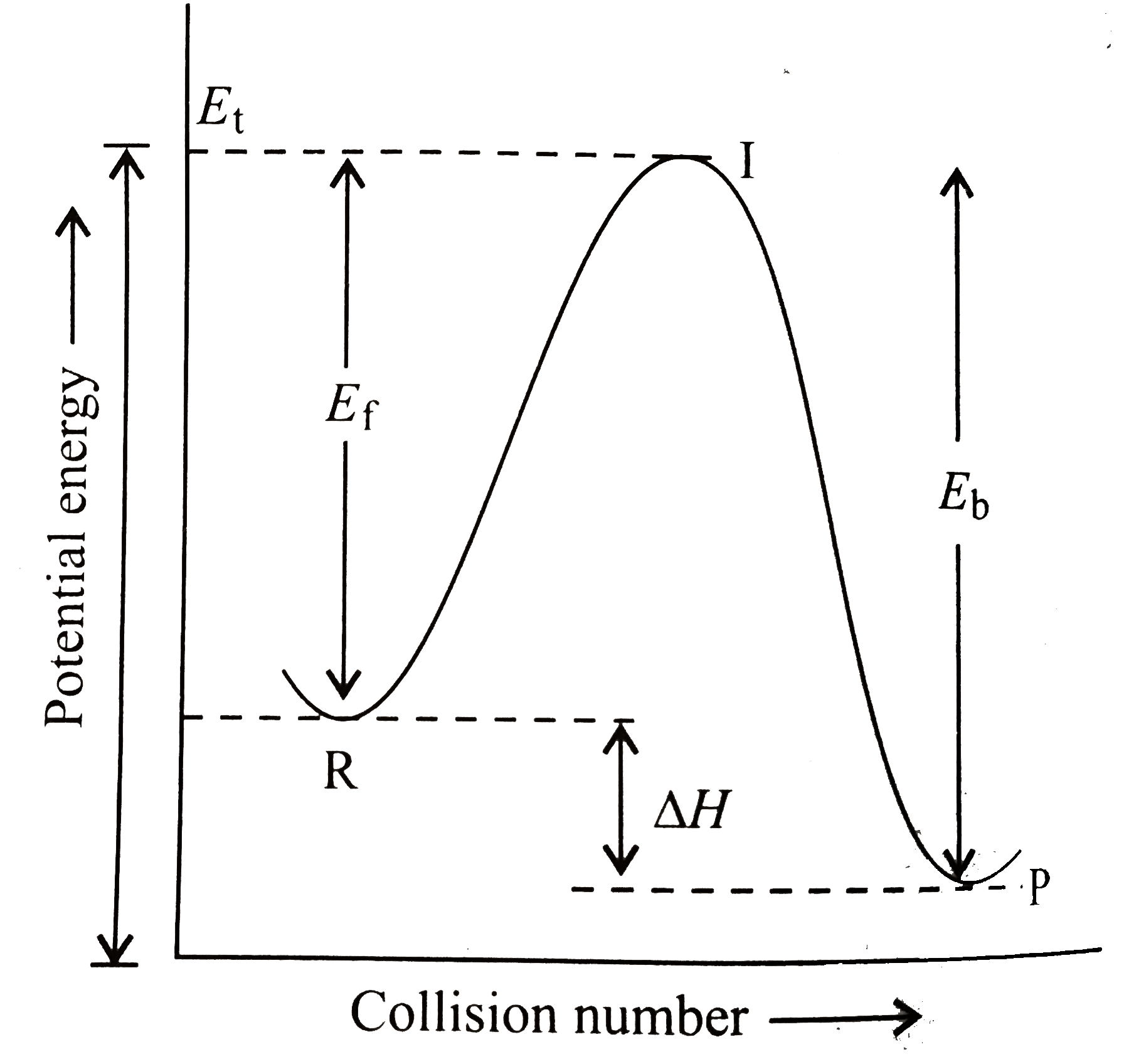
Ef= Activation energy of forward reaction
Eb= Activation energy of backward reaction
ΔH=Ef−Eb
Ef= threshold energy
For the following reaction at a particular temperature, according to the equations
2N2O5→4NO2+O2
2NO2+12O2→N2O5
The activation energies are E1 and E2, respectively. ThenView SolutionA colliison between reactant molecules must occur with a certain minimum energy before it is effective in yielding Product molecules. This minimum energy is called activation energy Ea Large the value of activation energy, smaller the value of rate constant k. Larger is the value of activation energy, greater is the effect of temperature rise on rate constant k.
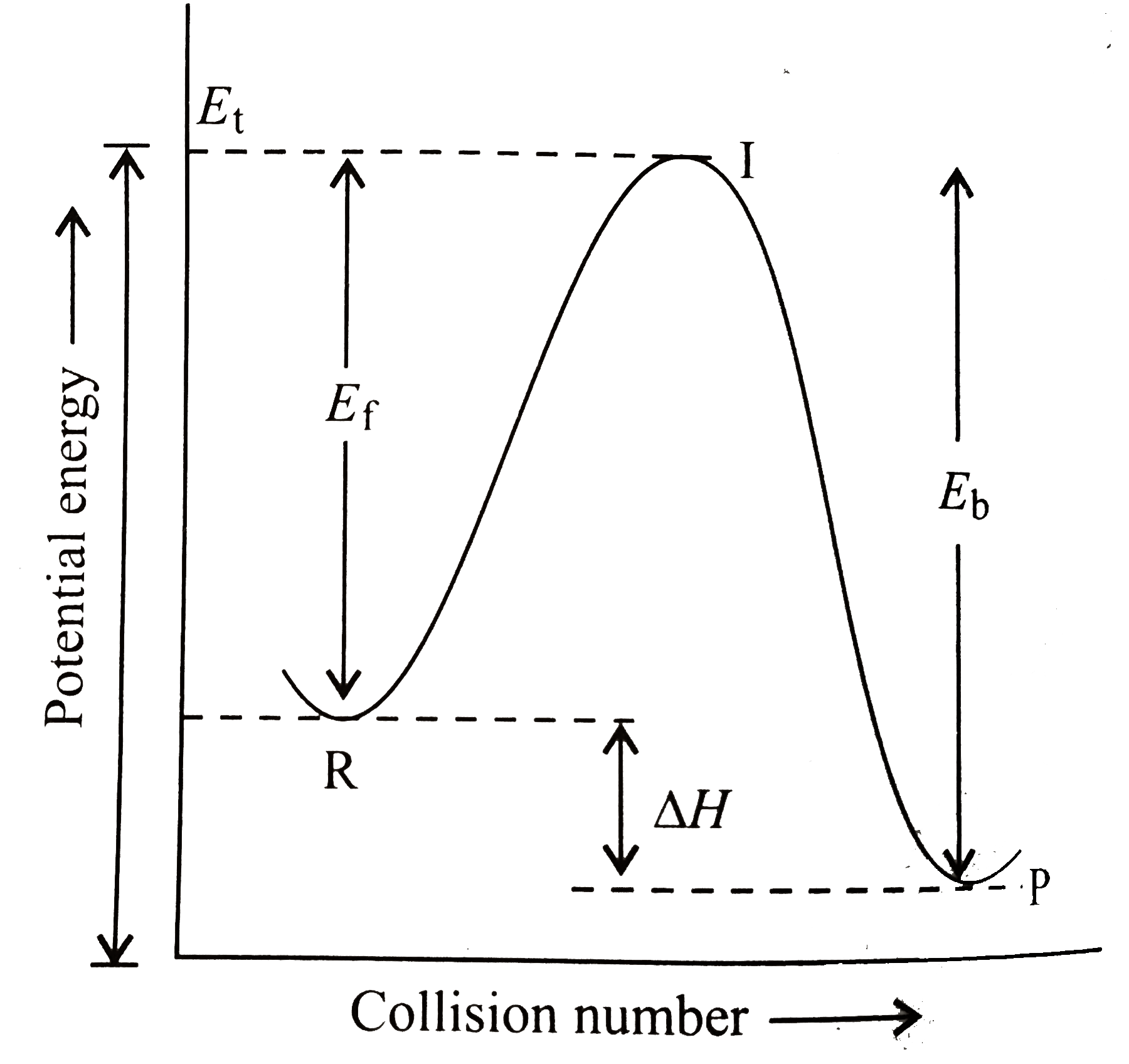
Ef= Activation energy of forward reaction
Eb= Activation energy of backward reaction
ΔH=Ef−Eb
Ef= threshold energy
If a reaction A+B→C is exothermic to the extent 30kJmol−1 and the forward reaction has an activation energy of 249kJmol−1 the activation energy for reverse reaction in kJmol−1 isView Solution
Knowledge Check
- Question 1 - Select One
A colliison between reactant molecules must occur with a certain minimum energy before it is effective in yielding Product molecules. This minimum energy is called activation energy Ea Large the value of activation energy, smaller the value of rate constant k. Larger is the value of activation energy, greater is the effect of temperature rise on rate constant k.
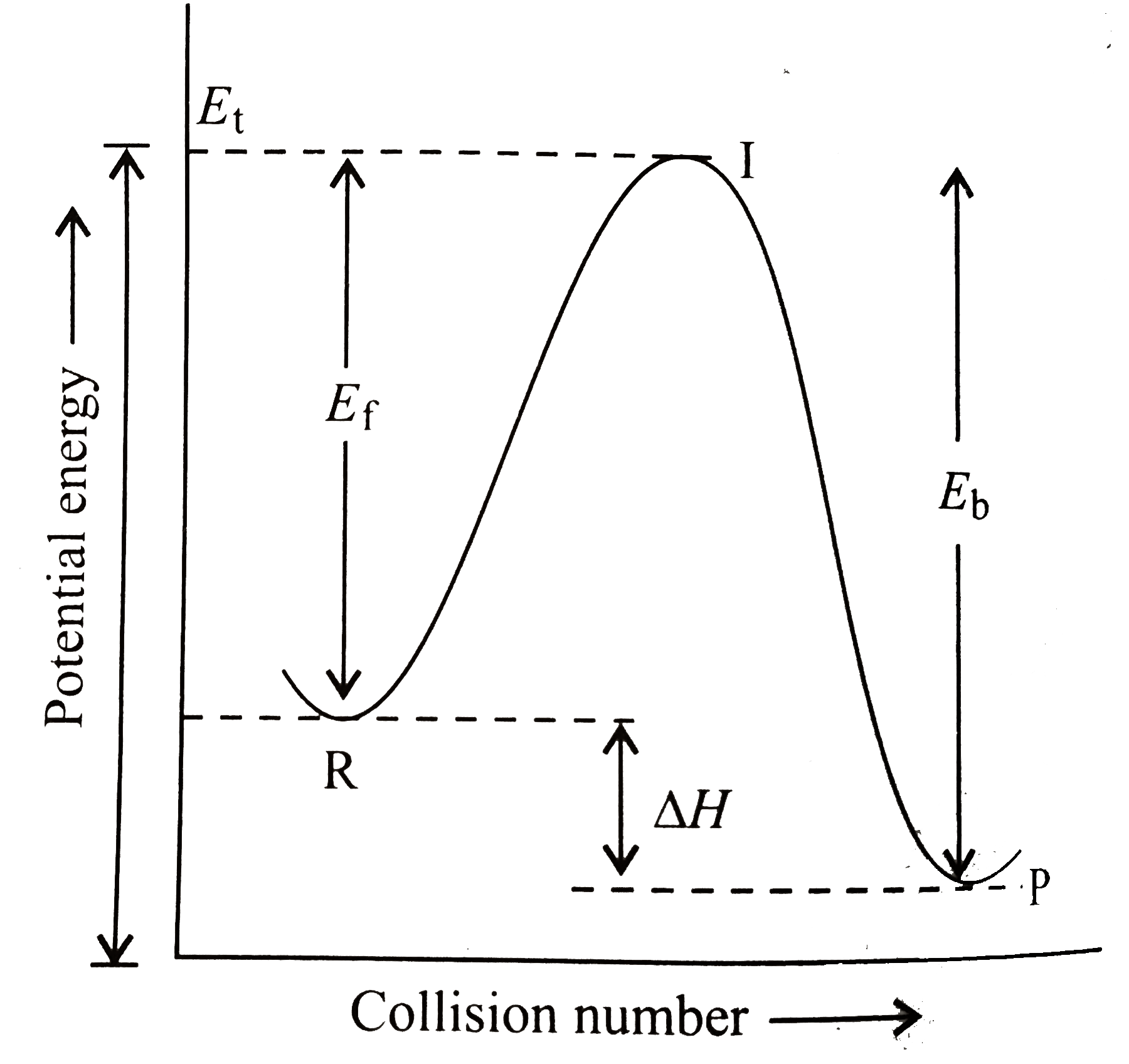
Ef= Activation energy of forward reaction
Eb= Activation energy of backward reaction
ΔH=Ef−Eb
Ef= threshold energy
The rate constant of a certain reaction is given by k=Ae−Ea/RT
(where A= Arrhenius constant). Which factor should be lowered so that the rate of reaction may increase?ATBZCADEa - Question 2 - Select One
A colliison between reactant molecules must occur with a certain minimum energy before it is effective in yielding Product molecules. This minimum energy is called activation energy Ea Large the value of activation energy, smaller the value of rate constant k. Larger is the value of activation energy, greater is the effect of temperature rise on rate constant k.
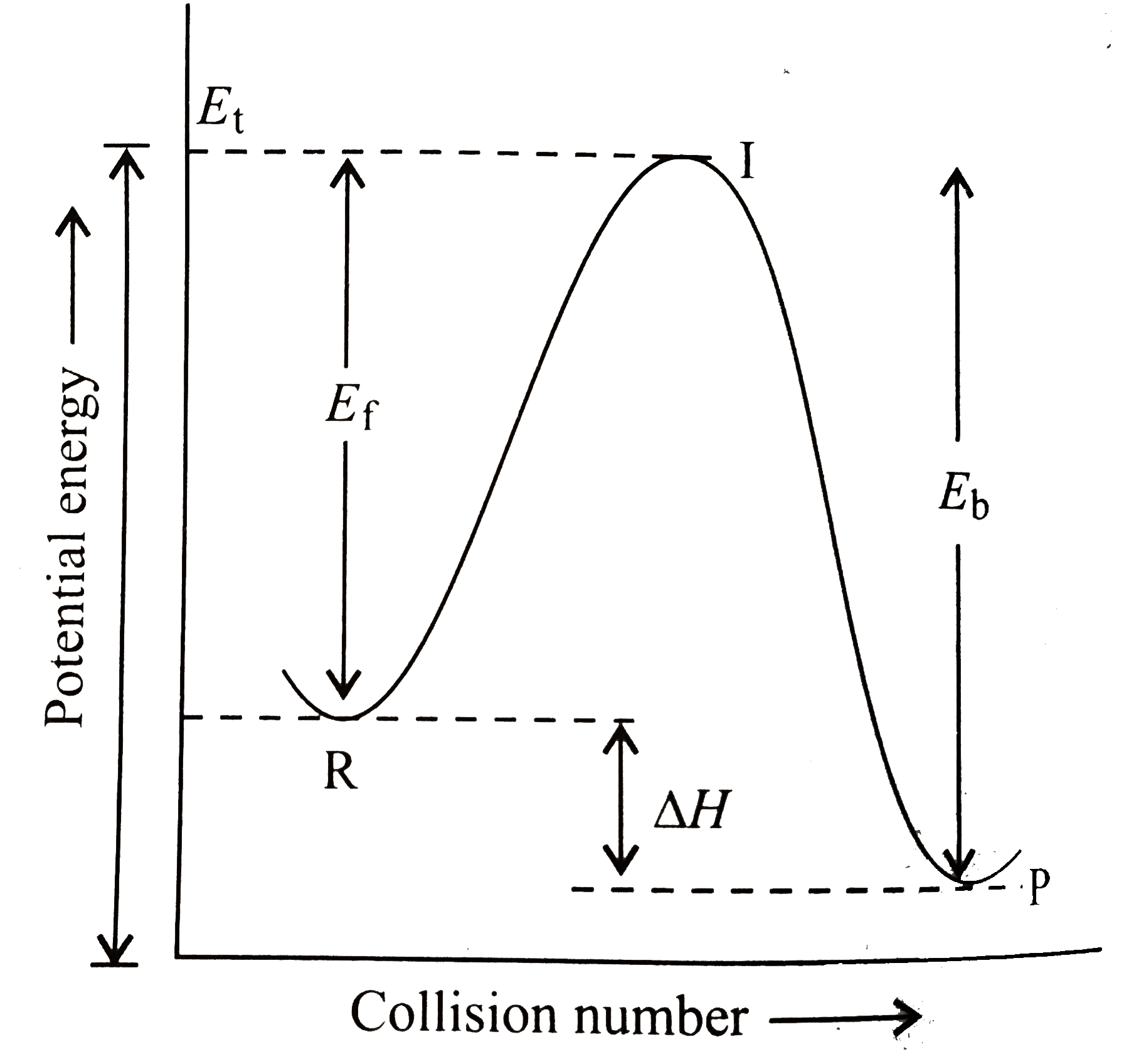
Ef= Activation energy of forward reaction
Eb= Activation energy of backward reaction
ΔH=Ef−Eb
Ef= threshold energy
For two reactions, activation energies are Ea1 and Ea2, rate constant are k1 and k2 at the same temperature. If k1>k2, thenAEa1>Ea2BEa1=Ea2CEa1<Ea2DEa1≥Ea2 - Question 3 - Select One
A colliison between reactant molecules must occur with a certain minimum energy before it is effective in yielding Product molecules. This minimum energy is called activation energy Ea Large the value of activation energy, smaller the value of rate constant k. Larger is the value of activation energy, greater is the effect of temperature rise on rate constant k.
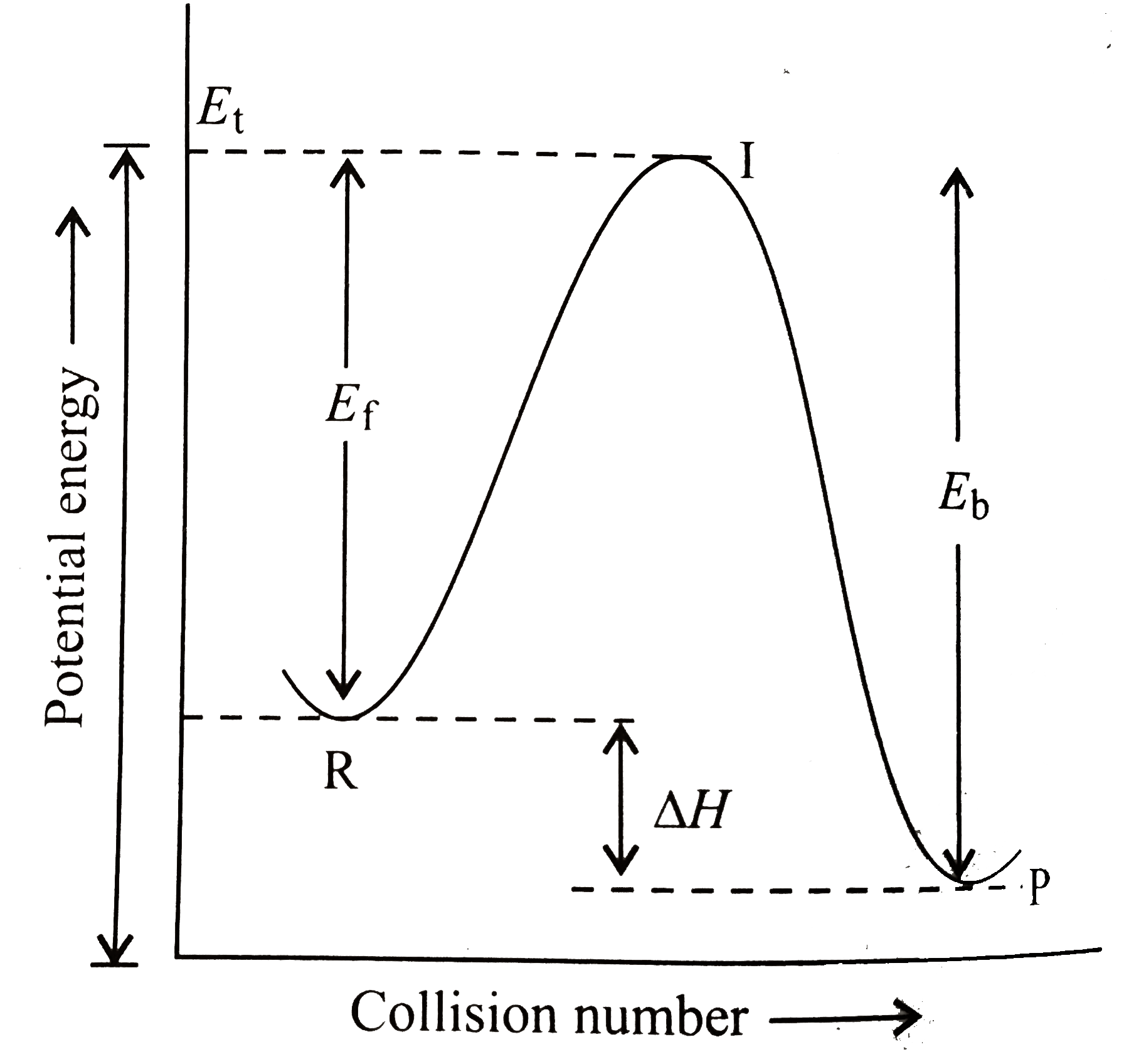
Ef= Activation energy of forward reaction
Eb= Activation energy of backward reaction
ΔH=Ef−Eb
Ef= threshold energy
The activation eneries for forward and backward reactions in a chemical reaction are 30.5 and 45.4kJmol−1 respectively. The reaction isAExothermicBEndothermicCNeither exothermic nor endothermicDIndependent of temperature
Assertion (A) : If the activation energy of a reaction is zero, temperature will have no effect on the rate constant. Reason (R ): Lower the activation energy, faster is the reaction.
View SolutionAssertion (A) : If the activation energy of a reaction is zero, temperature will have no effect on the rate constant. Reason (R ): Lower the activation energy, faster is the reaction.
View SolutionThe rate constant of most of the reaction increases with increase in temperature. According to the Arrhenius equation,k=Ae−Ea/RT. The curve of rate constant 'k' against temperature 'T' will be.
View SolutionThe rate of reaction (dxdt) varies with nature, physical state and concentration of reactants, temperature, exposure to light and catalyst, whereas rate constant (K) varies with temperature and catalyst only. The rate constant K is given as K=Ae−Ea/RT where A is Arrhenius parameter or pre-exponential factor and Ea is energy of activation. The minimum energy required for a reaction is called threshold energy and the additional energy required by reactant molecules to attain threshold energy level is called energy of activation.
The quantity −Ea/RT in −Ae−Ea/RT is referred as:View SolutionThe rate of reaction (dxdt) varies with nature, physical state and concentration of reactants, temperature, exposure to light and catalyst, whereas rate constant (K) varies with temperature and catalyst only. The rate constant K is given as K=Ae−Ea/RT where A is Arrhenius parameter or pre-exponential factor and Ea is energy of activation. The minimum energy required for a reaction is called threshold energy and the additional energy required by reactant molecules to attain threshold energy level is called energy of activation.
At what conditions exponential factor is zero a reaction?View Solution

